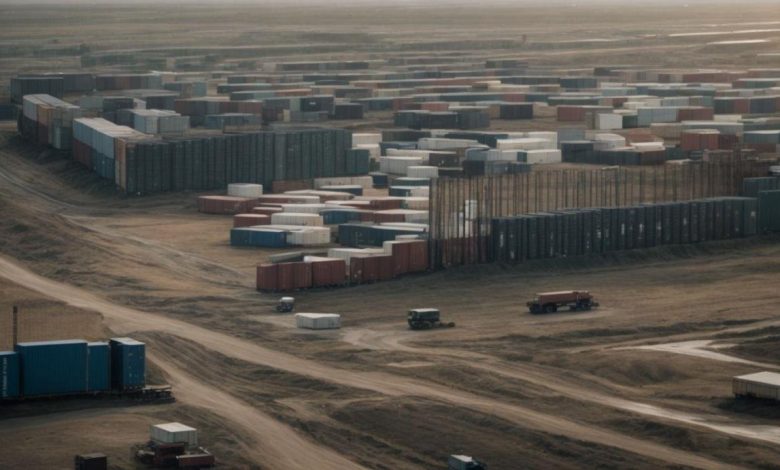Navigating Cross-Border Insolvency: Challenges and Solutions

Navigating Cross-Border Insolvency: Challenges and Solutions
Understanding Cross-Border Insolvency
What is Cross-Border Insolvency?
Cross-border insolvency refers to the legal processes and procedures involved when a company or individual that is insolvent has assets, creditors, or liabilities in multiple jurisdictions. It involves navigating the complexities of different legal systems and addressing the challenges that arise when attempting to resolve insolvency matters across borders.
Why is Cross-Border Insolvency Challenging?
Cross-border insolvency poses unique challenges due to the lack of uniformity in laws and regulations across jurisdictions. The differences in legal systems, languages, cultural norms, and asset recovery processes can complicate the insolvency proceedings. Coordinating efforts and resolving conflicts between multiple stakeholders in different countries can also be time-consuming and costly.
Challenges in Navigating Cross-Border Insolvency
1. Recognition of Foreign Proceedings
A significant challenge in cross-border insolvency is obtaining recognition of insolvency proceedings initiated in one country by courts in another jurisdiction. Establishing the foreign proceedings’ legitimacy ensures that the decisions made in one jurisdiction are given effect in another, providing a more efficient and coordinated approach to resolving the insolvency matters.
2. Conflicting Laws and Jurisdictions
Different legal frameworks, conflicting laws, and jurisdictions make it challenging to harmonize insolvency proceedings across borders. Understanding and reconciling these differences is vital to ensure fair treatment of all stakeholders involved, prevent asset dissipation, and maximize recovery for creditors.
3. Communication and Coordination
Effective communication and coordination between insolvency practitioners, courts, creditors, and other stakeholders are crucial in cross-border insolvency. Language barriers, time zone differences, and cultural nuances can hinder effective collaboration and may lead to delays and disputes. Implementing communication channels and coordinating efforts are key to streamlining the insolvency process.
Solutions for Navigating Cross-Border Insolvency
1. International Insolvency Frameworks and Treaties
International insolvency frameworks and treaties, like the UNCITRAL Model Law on Cross-Border Insolvency, provide a legal foundation for cooperation and coordination between jurisdictions. These frameworks aim to facilitate recognition of foreign proceedings and provide a framework for communication and coordination.
2. Multinational Cooperation and Collaboration
Collaboration among stakeholders, including insolvency practitioners, government agencies, and courts, plays a crucial role in navigating cross-border insolvency. Establishing working groups and forums to share best practices, exchange information, and address common challenges can help improve the efficiency and effectiveness of cross-border insolvency proceedings.
3. Professional Expertise and Specialized Service Providers
Engaging expert insolvency practitioners with experience in cross-border matters can greatly assist in navigating the complexities of cross-border insolvency. Expertise in understanding and applying different legal systems, coordinating international proceedings, and addressing the unique challenges associated with cross-border insolvency can help streamline the process and achieve better outcomes.
Frequently Asked Questions (FAQs)
1. Can I file for insolvency in one country if I have assets and creditors in multiple countries?
Yes, it is possible to file for insolvency in one country while having assets and creditors in multiple countries. The process involves obtaining recognition of foreign proceedings in the respective jurisdictions to ensure the decisions made in one jurisdiction are given effect across borders.
2. How can I protect my interests as a creditor in cross-border insolvency proceedings?
As a creditor in cross-border insolvency, it is crucial to engage legal and financial professionals who have experience in cross-border matters. These professionals can help you navigate the process, assert your rights, and maximize your recovery. Stay informed about the proceedings, and actively participate to protect your interests.
3. Are there any alternatives to full-scale insolvency proceedings in cross-border cases?
Yes, in certain cases, alternatives to full-scale insolvency proceedings, such as debt restructuring or informal workouts, may be considered. These alternatives can help achieve a consensual resolution, minimize costs, and preserve business operations while addressing financial distress across borders.
Navigating cross-border insolvency can be a complex and challenging process, but with the right understanding, strategies, and expert assistance, it is possible to overcome these challenges and achieve successful outcomes. By leveraging international frameworks, promoting collaboration, and seeking professional expertise, stakeholders can work together to efficiently resolve cross-border insolvency matters.



